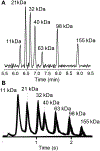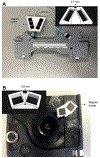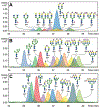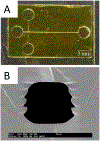Challenging Bioanalyses with Capillary Electrophoresis
- PMID: 31698907
- PMCID: PMC6995690
- DOI: 10.1021/acs.analchem.9b04718
Challenging Bioanalyses with Capillary Electrophoresis
Abstract
Figures










References
-
- Mora MF; Jones SM; Creamer J; Willis PA Electrophoresis 2018, 39, 620–625. - PubMed
-
- Ferreira Santos MS; Cordeiro TG; Noell AC; Garcia CD; Mora MF Electrophoresis 2018, 39, 2890–2897. - PubMed
-
- Creamer JS; Mora MF; Willis PA Electrophoresis 2018, 39, 2864–2871. - PubMed
-
- McCord BR; Gauthier Q; Cho S; Roig MN; Gibson-Daw GC; Young B; Taglia F; Zapico SC; Mariot RF; Lee SB; Duncan G Anal. Chem 2019, 91, 673–688. - PubMed
Publication types
MeSH terms
Substances
Grants and funding
LinkOut - more resources
Full Text Sources
Medical

